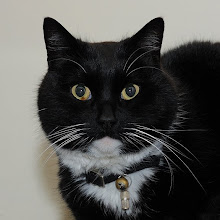With some comments on the previous post on the 1694 Warrant on precedence in mind, the author thought it necessary to publish a supporting article with additional comments and remarks.
In the said warrant the Queen's Regt of Foot is mentioned, after which the three English Regt's previously serving in Holland should take precedence. As there were various regiments known as the Queen's Regt, or some other form, in the late 17th century, this may give rise to confusion.
The Queen's Regiment mentioned here is what would later become the 4th (the King's Own) Regiment of Foot, and eventually the King's Own (Royal Lancaster Regiment). Raised on 13 July 1680 as the 2nd Tangier Regiment, it was named in 1684 after the future Queen Mary (of Modena), the wife of the duke of York and Albany, the future James II. In 1688 the regiment was renamed as the Queen's Consort's after Queen Mary II, consort of William III. It appears from literature that the designation Consort was omitted; see, e.g., the regiment's historical record by Richard Cannon. In 1702 it was renamed the Queen's Regiment. This changed to Queen's Own Regiment later, probably to avoid confusion with the other Queen's Regiment, the future King's Regiment.
The other regiment in 1694 with Queen in its title was the Queen Dowager's Regiment, named after Queen Catherine, widow of Charles II. This regiment was raised in 1661 as the Tangier Regiment. The title "Royal" was conferred upon the regiment in 1703 for gallant duty in Flanders. It is unclear whether the regiment was redesignated the Queen's Royal in 1705, after the demise of the late Queen Catherine, or that this happened later (see, e.g., the regimental timeline on the Queen's Royal Surrey's website).
Now to the three English Regiments from Holland. These three regiments were part of the Anglo - Dutch Brigade, which additionally contained three Scots Regiments. The English regiments all date from 1674, when, after the Treaty of Westminster, England was opened again as recruiting ground for the Dutch. (In 1665 the English regiments in Dutch service were recalled; see the Holland Regiment for information on this.) Actually one regiment was known as the Irish Regiment, but that was omitted in 1675.
In 1674/75 the regiments were:
Viscount Clare's, this being Daniel O'Brien, the 3rd viscount
Henry Lillingston's, being most likely the father of the later Luke Lillingston. Often these two are confused.
William Molyneux - Disney's
In 1685 the regiments were recalled to England by James II because of Monmouth's rebellion, and were placed on the English establishment for the period 5 June - 3 August. In November 1688 the regiments would return with William of Orange's invasion force, and be placed on the English establishment subsequently. In 1688 the regiments were known as:
Thomas Tollemache's
Philip Babbignton's
John Cutt's
Only the first two regiments would be retained after the Treaty of Rijswijk in 1697, and would become known as the 5th Regiment of Foot and 6th Regiment of Foot, respectively, and much later as the Northumberland Fusiliers and Royal Warwickshire Regiment.
As has been illustrated, the third regiment was disbanded, despite attempts saving it by placing the regiment on the Naval establishment. The reason for this is unclear, as the regiment held precedence over several regiments that were retained.
Finally the author want to point at a possible writing error in the document in the previous post: it says that in 1668 the earl of Ossory made a capitulation of the regiments in Holland. However, the earl of Ossory assumed command of the Anglo - Dutch Brigade in 1678. So probably it should be 1678 and not 1668.
Subscribe to:
Post Comments (Atom)




2 comments:
Thanks for taking the trouble to clarify that, Wienand.
Happy to be of help Paul.
Post a Comment